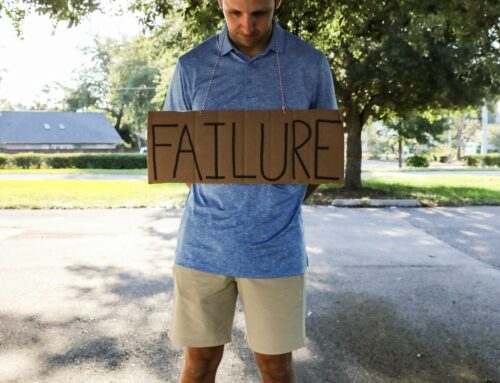
As a high school senior, I had a few people in my circle who were planning to take a gap year, and this plan was usually met with alarm. The most commonly held view was something like, “If you quit now, you’ll never go back.”
There’s certain amount of momentum involved, the argument goes, and if you take your foot off the pedal, you’ll lose everything and come to a screeching halt. None of what you’ve done until now will matter. This idea that momentum is crucially important continues to be prevalent as people develop their careers.
I hear the linear progress myth (or some variation of it) quite often from clients who are flirting with burnout. They’ve been working non-stop towards a goal and making progress, but something happens. The project hits a snag, or they find they cannot sustain the pace they’ve been setting and need to slow down or take a break. The fear is that if they pause and reassess, change course, or have to work around an unanticipated obstacle, all the progress they’ve made to this point will be lost.
But that isn’t how progress works.
The linear progress myth is one of the many ways corporate ideas have migrated into private lives. Because companies and financial endeavors aspire to linear, sustainable financial growth that satisfies investors, we’ve come to believe that the trajectory of our individual lives should be the same. The line on the imaginary graph should always go up. Never down. Never sideways.
This idea is remarkably persistent, even though it’s clear that living organisms do not operate this way.
- We know that fitness doesn’t work this way.
- We know that spiritual development doesn’t work this way.
- We know learning doesn’t work this way.
- We know recovering from physical injuries doesn’t happen this way.
When we buy into the linear progress myth, we do things like:
- Pushing ourselves to focus past the point where it’s productive
- Over analyzing and trying harder when stepping for a bit would be better
- Forcing our career in a single direction instead of trying new things
- Refusing to take risks for fear of failing or having to slow down
Momentum is useful if you’re running a race, building a habit, or trying to propel a rocket out of the atmosphere. But consider the idea that your career and your life may not be a race to be run with ruthless efficiency or a mountain to scale with unrelenting effort.
Living organisms operate in cycles, not straight lines. Some ways to work with your cyclical nature:
- Put a problem on the backburner and let your subconscious work on it.
- Move your body or sleep on it and see how your perspective changes.
- Let muscle memory carry you back into the flow of things after a rest.
- Connect with others who care about the same things you do and see what new ideas arise.
Sometimes when we take a break, we don’t “go back” to doing what we were doing before in exactly the same way. That isn’t failure or loss of progress. Progress isn’t lost because life doesn’t unfold in straight lines.
P.S. About one fourth of the articles I wrote gets included as a post. The rest go out via email, so if you’d like to read more like this one, sign up for the Monthly Deep Dive (free of charge) using the form below.
Share this article

Kathryn Stinson
I help passionate people identify and dismantle the cultural drivers of burnout, so they can serve their big visions without burning out. Find information and strategies for dealing with burnout here, or reach out to work with me.
Subscribe
Each month I take a deep dive into one aspect of resisting burnout.
Monthly Deep Dive Letters name cultural dynamics that generate burnout and open doors to imagining how we might do things differently. For examples of what I write about, take a look at the blog.
No productivity tips, and no motivational pep-talks. Just in depth, thoughtful content to support you in resisting burnout culture. You’ll also be notified of new events and programs.





